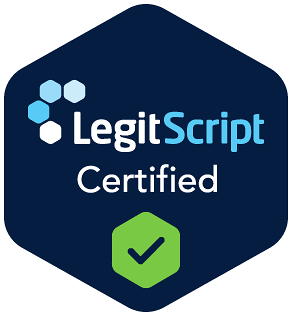If you have anxiety and also struggle with alcohol or drugs, you are not broken. You need care that treats both at the same time. This guide demonstrates how a dual-diagnosis plan can alleviate anxious thoughts, mitigate cravings, and foster lasting daily habits. You will learn what “co-occurring disorders” means, how dual diagnosis treatment works, and why simple tools like CBT, mindfulness, contingency management, and craving management help. You will also see how care teams keep you safe with smart medication choices and good follow-up. Every claim here links to trusted sources so you can check facts yourself. Ready to map your next step and feel steady at work, at school, and at home. Keep reading.
1) Dual-diagnosis basics: why treating anxiety and substance use together works

What it means. Dual diagnosis (also called co-occurring disorders) means a mental health condition, like anxiety, exists along with a substance use disorder. Treating both together is best. National guidance says integrated care improves results and lowers relapse risk.
Why does it help? Anxiety can feed the urge to use. Substance use can increase anxiety over time. When the plan treats both, you learn skills for thoughts, feelings, and cravings at once. SAMHSA’s integrated treatment toolkits demonstrate how teams coordinate therapy, medication, and follow-up in a single pathway.
Try this
- Ask your provider to treat anxiety and substance use together.
- Request one plan that lists both goals and all visits.
- Keep one simple symptom log for mood, sleep, and cravings.
2) How anxiety is treated inside a recovery plan
Therapy and medication. NIMH explains that anxiety is often treated with psychotherapy, medication, or both. The plan should align with your needs and can be adjusted over time.
CBT works. CBT helps you notice worry thoughts, test them, and choose a helpful action. CBT is well supported for substance use and fits well inside dual-diagnosis care.
Ask your team
- Will I receive CBT skills for managing worry and cravings?
- Can I practice brief mindfulness between sessions?
- What are safe medication choices for me?
Quick tips
- Keep sessions on your calendar like any work meeting.
- Use short notes after each visit so you remember the plan.
3) Safety note about anxiety meds
Why this matters. Some anxiety drugs, like benzodiazepines, can carry risk. The FDA updated the Boxed Warning for all
to stress the risks of misuse, dependence, and withdrawal. Extra caution is needed if you also take opioids.
What trusted groups say. CDC guidance on opioid prescribing also warns about combining opioids and benzodiazepines because of overdose risk. If you are on pain meds, tell your providers before starting any anxiety drug.
Do this
- Share all meds and supplements with your care team.
- Ask about non-sedating options when possible.
- If you and your doctor do use a benzodiazepine, get a taper and safety plan in writing.
4) What to expect inside dual-diagnosis care
Integrated steps. A good plan checks your anxiety, substance use, sleep, medical needs, readiness to change, and supports. Teams often utilize the ASAM framework to determine the appropriate level of care. You and your provider adjust the plan as life changes.
A week in care. You may have groups, one-to-one counseling, skills practice, and brief check-ins. You learn to map triggers, ride out cravings, and lower worry. All parts work together so your brain gets one clear message.
Ask for
- One written plan with both anxiety and substance goals.
- A short list of home practices, not a long workbook.
- Coordination across the therapist, prescriber, and primary care provider.
5) Craving management made simple and science-based
Why cravings feel strong. Cravings rise and fall like a wave. They feel big, but they pass. Mindfulness-Based Relapse Prevention (MBRP) teaches skills that reduce craving and use. Trials show MBRP can lower substance use, craving, and stress, and help with later outcomes.
CBT tools help too. CBT coping skills help you spot high-risk thoughts and swap in safer actions. Reviews show CBT helps across alcohol and drug use.
Try this
- When a craving hits, name it. Start a 10-minute timer and breathe slowly.
- Do one simple action: walk, sip water, or text a support.
- After the wave passes, jot one line about what helped.
6) Contingency management: small rewards, big gains
What it is. Contingency management (CM) gives small, earned rewards for healthy steps, like negative drug screens or session attendance. It is one of the most effective behavioral tools for many substances, especially stimulants. NIDA and federal reviews indicate that CM is effective and improves engagement.
How does it fit anxiety? When anxiety is high, it can be hard to show up. CM helps you build wins. Each visit, skill practice, or clean test earns a small prize. Over time, those wins add up and your confidence grows. New guidance and state Medicaid pilots also support CM for adults.
Ask your team
- Do you offer CM or a simple rewards system I can use?
- What counts as an “earnable” step for me this week?
- Can I track my points on my phone?
7) Day-by-day anxiety skills that support sobriety
Mindfulness minutes. Short, gentle practice helps you notice worry and let it pass. Research links mindfulness training with lower craving, less stress, and better use outcomes.
CBT thought checks. Write “situation, thought, feeling, action.” Then ask, “What is a kinder, truer thought?” Choose one small action that fits your values. CBT has strong evidence in the dual diagnosis treatment.
Your mini-routine
- One minute of mindful breathing after meals.
- One CBT thought record in the evening.
- One short call or text to a support.
8) Working with your prescriber when you have anxiety and a substance use concern
Shared decisions. NIMH gives clear, plain guides on mental health medications. Bring questions to your prescriber. Ask about benefits, risks, and safe choices for you.
Avoid risky mixes. Combining opioids and benzodiazepines raises overdose risk. The FDA and CDC warn about using them together. If you take either class, make a safety plan with your team.
Bring to your visit
- A full list of meds and supplements.
- Your sleep, mood, and craving notes.
- One question about tapering or alternatives if needed.
9) Building a weekly plan you can actually follow
Please keep it simple. Use a one-page plan. Map your week with blocks for sessions, exercise, meals, sleep, and family time. Add two short skill blocks per day. NIDA’s treatment guide shows recovery works best with routine, practice, and a strong care team.
Review and adjust. Check your plan every week with your counselor. If work or school is busy, keep the core. You can shrink the rest and still move forward.
Checklist
- Two therapy or group blocks.
- One prescriber checks in when needed.
- Three short mindfulness breaks per day.
- A rewards tracker for CM steps.
10) Handling panic, worry spikes, and urges in the moment
Two steps that help. First, ground your body. Feel your feet on the floor. Breathe out longer than you breathe in. Second, name what is happening without judgment. These skills originate from CBT and MBRP research, which helps lower stress and cravings.
After the wave, write a single line about what you did and what worked. Over time, you will see patterns. That makes the next choice easier.
Pocket list
- Slow exhale breathing for 60 to 120 seconds.
- Drink water and change rooms.
- Text a support person one word: “check-in.”
11) Care coordination keeps the plan clear
Why it matters. When your therapist, prescriber, and primary care provider all talk, your plan is safer and easier. You repeat fewer forms. You get one message. This is a core part of integrated care for co-occurring disorders.
How to do it. Ask for releases so your clinicians can share the basics. Keep a shared goal list and med list. Please bring them to every visit.
Your actions
- Put all providers in one contact group.
- Keep one page with goals, meds, and emergency steps.
- Ask for a summary note after key visits.
12) How contingency management and craving management look in real life
A normal Monday. You go to work or school. At lunch, you do a one-minute breathing practice. After work, you attend a group and bring your CBT thought record. Your program tracks your attendance and screens. You earn points for each step. Over time, points add up to small rewards. This is contingency management in action. Studies and federal reviews show CM improves abstinence and engagement.
An evening urge. A craving pops up. You start a 10-minute timer and walk. You name the feeling. You breathe out slowly. You text a friend, then update your points. MBRP research links this kind of mindful coping with lower craving and less use.
Make it easy
- Keep a points note in your phone.
- Pair a small, healthy reward with each win.
- Review wins with your counselor weekly.
13) Frequently asked questions
Do I have to be fully sober before treating anxiety?
No. Integrated care can treat anxiety and substance use together when it is safe and clinically sound. This is the goal of dual diagnosis treatment.
Which therapy is best?
Most people find CBT skills and mindfulness practice beneficial as dual diagnosis treatment. The evidence for both in SUD care is strong, and mindfulness-based programs help with stress and craving.
What is the safest anxiety medication?
There is no one “best” drug for everyone. NIMH suggests choosing based on your needs and in close talk with your prescriber. Be extra careful with benzodiazepines, especially if opioids are in the picture. See the FDA and CDC pages for risks.
Does contingency management really work?
Yes. CM is one of the most studied tools in addiction care, with strong evidence that it improves abstinence and engagement, especially for stimulants.
14) A simple one-week starter plan
Pick two daily skills and one weekly goal. For daily skills, use one minute of mindful breathing after lunch, and one CBT thought record after dinner. For your weekly goal, add two sessions or groups. Track your steps. If your program uses contingency management, ask how to earn points.
Add craving management moves you can do anywhere. When a craving hits, name it, start a timer, and move your body. Drink water. Call or text a support. Afterward, write one line on what helped. These small reps train your brain. MBRP and CBT evidence show these reps matter.
Checklist
- Two short skills every day.
- Two to four care contacts this week.
- Points for each step if CM is offered.
- A five-minute review on Sunday night.
15) How to talk with your team about goals and safety
Keep it clear. Tell your team what you want: less worry, fewer cravings, better sleep, and steady work or school. Ask for a plan that treats anxiety and substance use together and fits your life.
Please keep it safe. Share all meds. Ask about benzodiazepine risks, especially with opioid pain meds. Read the FDA and NIDA pages so you know the signs to watch.
Say this
- “Please help me treat anxiety and substance use together.”
- “I want CBT and mindfulness skills I can use in five minutes.”
- “Can we use a rewards tracker for my steps?”
16) Proof points: why these skills work
CBT. Large reviews show CBT helps across substances by teaching coping skills that you can learn and keep using.
Mindfulness. Trials show mindfulness training can lower use, craving, and stress, and new work shows benefits for anxiety during medication treatment.
Contingency management. Federal reviews and numerous studies demonstrate that CM enhances abstinence and attendance. It pairs well with CBT and medication care.
17) Your next right step
Two short paragraphs to move you forward.
Open your calendar. Book two sessions for this week. Add three one-minute mindfulness breaks a day. Start a points note for earned steps. Make a list of your top three triggers and one “if-then” plan for each. Tell one trusted person your plan.
If you live in New Jersey near New Jersey and want outpatient help that treats co-occurring disorders with a human, evidence-based touch, you can get started now. You can talk with a counselor, check your coverage, and pick a schedule that fits work, school, and family.
Quick checklist
- Ask for integrated care for anxiety and substance use.
- Request CBT, mindfulness, and contingency management.
- Use a simple craving management routine with a timer and a short walk.
- Keep one page with your goals, meds, and weekly plan.
Sources you can trust
- Anxiety disorder treatment basics, NIMH.
- CBT for substance use, peer-reviewed review.
- Contingency management evidence and implementation: NIDA blog overview, HHS ASPE report, systematic review articles, implementation paper, and state Medicaid report.nida.nih.gov/…/five-areas-where-more-research-isnt-needed-to-curb-overdose-crisis
- Safety guidance about benzodiazepines and opioids: FDA boxed warning update, CDC opioid prescribing guideline, NIDA overview on risks.
- NIDA research-based dual diagnosis treatment principles and recovery basics
Gentle next step
If you are near New Jersey and want an outpatient path that treats anxiety and addiction together with evidence-based care and a kind, judgment-free team, BlueCrest Counseling can help you verify insurance, set a plan, and start this week. Call Today, Verify Your Insurance, or Contact Us to take the next step in your addiction recovery journey.




